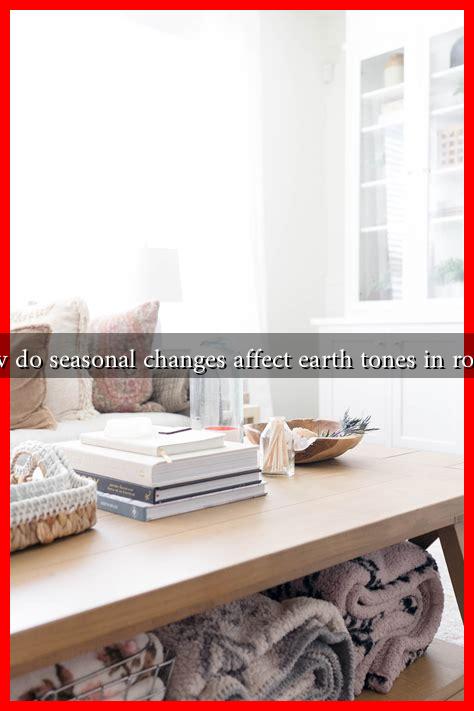-
Table of Contents
How Do Seasonal Changes Affect Earth Tones in Rooms?
Seasonal changes have a profound impact on our environment, influencing not only the natural world but also the aesthetics of our living spaces. Earth tones—colors inspired by nature, such as browns, greens, and muted yellows—are particularly sensitive to these seasonal shifts. Understanding how these changes affect the perception and use of earth tones in interior design can help homeowners create spaces that feel harmonious and inviting throughout the year.
The Influence of Natural Light
One of the most significant factors affecting how earth tones appear in a room is the quality and quantity of natural light, which varies with the seasons. During the summer months, longer days and brighter sunlight can make earth tones appear more vibrant and lively. Conversely, in winter, shorter days and lower light levels can cause these colors to look muted and subdued.
- Summer: Bright sunlight enhances the warmth of earth tones, making them feel more inviting.
- Winter: Diminished light can lead to a cooler perception of these colors, often requiring additional lighting to maintain warmth.
For example, a warm terracotta wall may radiate energy in the summer sun but could appear dull and lifeless in the winter months. Homeowners can counteract this by incorporating layered lighting solutions, such as warm LED bulbs, to maintain a cozy atmosphere during the colder seasons.
Seasonal Color Trends
Interior design trends often shift with the seasons, and earth tones are no exception. Each season brings its own palette, influencing how these colors are perceived and utilized in home decor.
- Spring: Soft greens and muted yellows emerge, encouraging a fresh and rejuvenating atmosphere.
- Summer: Rich browns and deep greens dominate, reflecting the lushness of nature.
- Autumn: Warm oranges, rusts, and deep reds complement the changing foliage, enhancing the cozy feel of earth tones.
- Winter: Cool grays and deep browns can create a serene and tranquil environment, perfect for the colder months.
For instance, a living room painted in a soft sage green may feel refreshing in spring but could be complemented with deeper, warmer earth tones like burnt sienna in the fall to create a more seasonal ambiance.
Psychological Effects of Earth Tones
The psychological impact of colors is well-documented, and earth tones are known for their grounding and calming effects. Seasonal changes can amplify these effects, making certain colors more appealing at different times of the year.
- Spring: Light greens and soft browns can evoke feelings of renewal and growth.
- Summer: Rich earth tones can create a sense of stability and comfort during the busy summer months.
- Autumn: Warm earth tones can foster a sense of coziness and nostalgia as the weather cools.
- Winter: Darker earth tones can provide a sense of security and warmth during the cold, dark months.
Research indicates that colors can influence mood and behavior. A study published in the journal “Color Research and Application” found that warm colors, including many earth tones, can increase feelings of comfort and relaxation, making them ideal for living spaces during the colder months.
Practical Tips for Incorporating Earth Tones Seasonally
To effectively utilize earth tones in your home throughout the year, consider the following tips:
- Change textiles seasonally: Swap out cushions, throws, and rugs to reflect seasonal colors.
- Use paint strategically: Consider repainting or adding accent walls in different earth tones as the seasons change.
- Incorporate natural elements: Use plants and natural materials that reflect the current season’s palette.
- Adjust lighting: Use warm lighting in winter and brighter, cooler lighting in summer to enhance the appearance of earth tones.
Conclusion
Seasonal changes significantly affect how earth tones are perceived and utilized in interior design. By understanding the influence of natural light, seasonal color trends, and the psychological effects of these colors, homeowners can create spaces that feel inviting and harmonious throughout the year. Incorporating practical tips for seasonal adjustments can further enhance the beauty and comfort of your living spaces. Embracing the natural shifts in color and light not only enriches your home but also fosters a deeper connection to the changing seasons.
For more insights on color psychology and interior design, consider visiting Color Psychology.

